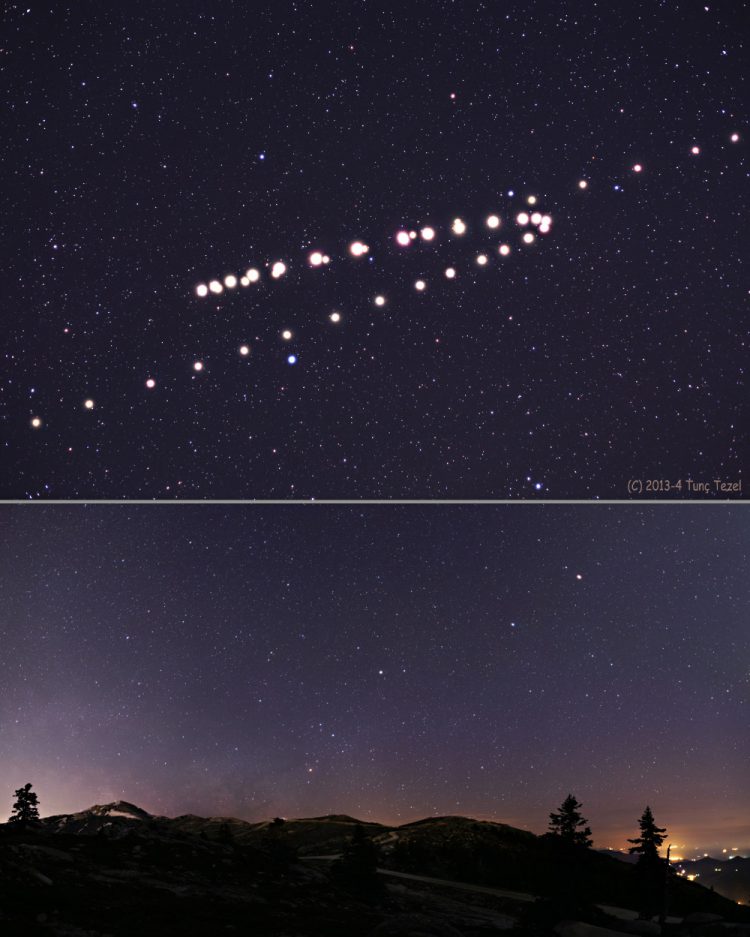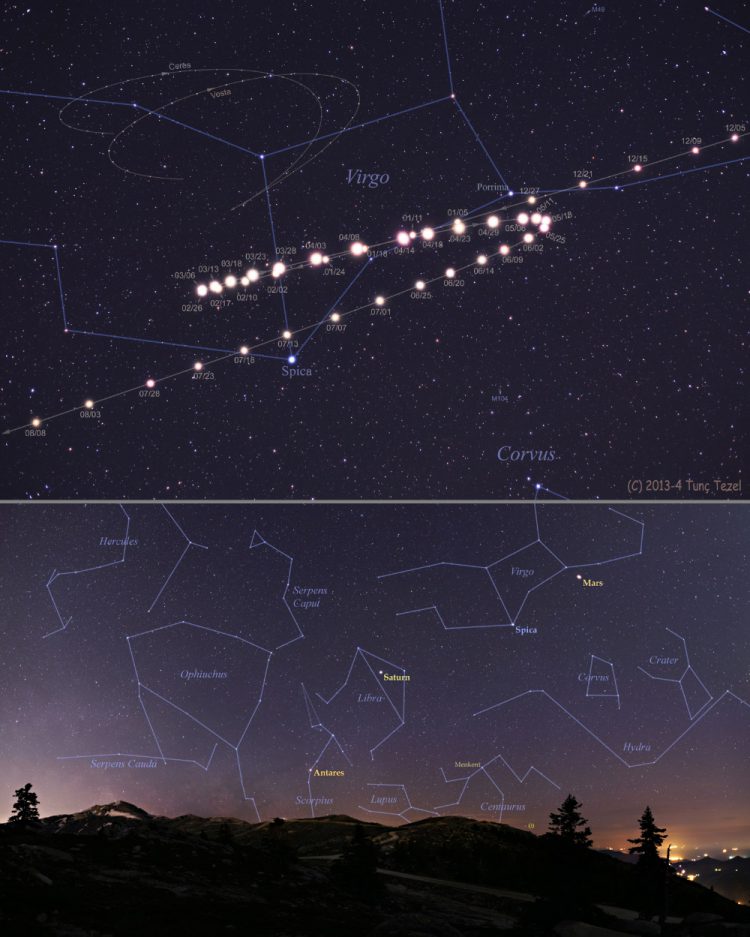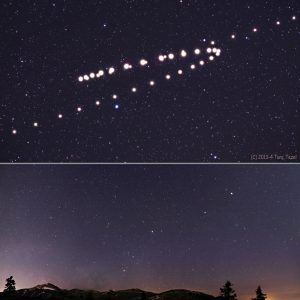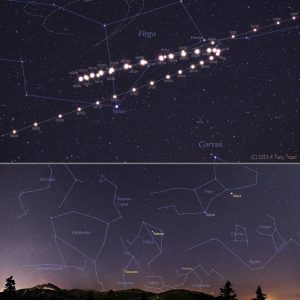Tracing the Red Planet
Description
As seen on Astronomy Picture of the Day, the motion of Mars in the Earth’s sky during the course of 9 months is captured on the multi-exposure digital composite (top). This sequence follows Mars from December 2013 (right) through August 2014 (left). The images are spaced some 5 to 7 days apart and they trace the retrograde motion of Mars in the Earth’s night sky. On the bottom picture, Mars appears near the opposition in May 2014, which was taken from Uludag NP near Bursa. Moving the slider on the image brings out labels and dates on the both images. Also popping up with the labels are two more series of star-like images, which are Ceres and Vesta tracing their own retrograde loops.
Why would Mars appear to move backwards in the sequence? Mars do not actually reverse the direction of its orbit. Instead, the apparent backwards motion with respect to the background stars is a reflection of the motion of the Earth itself. Retrograde motion can be seen each time Earth overtakes and laps planets orbiting farther from the Sun, the Earth moving more rapidly through its own relatively close-in orbit. About every two years the Earth passes Mars (during opposition). On 2014 April 8 the Red Planet was opposite the Sun in Earth’s sky (at opposition). That date occurred at the center of this series with Mars near its closest and brightest. In addition to Mars tracing its retrograde loop in central Virgo, Ceres and Vesta were also doing the same thing in northeastern part of the constellation, which can be seen in the pop-up mode, as mentioned above.
TWAN photographer Tunc Tezel has a special interest to capture long-term motions of the planets in the night sky and his collection of Mars retrograde motions made in the last two decades is a unique effort.




comments (0)